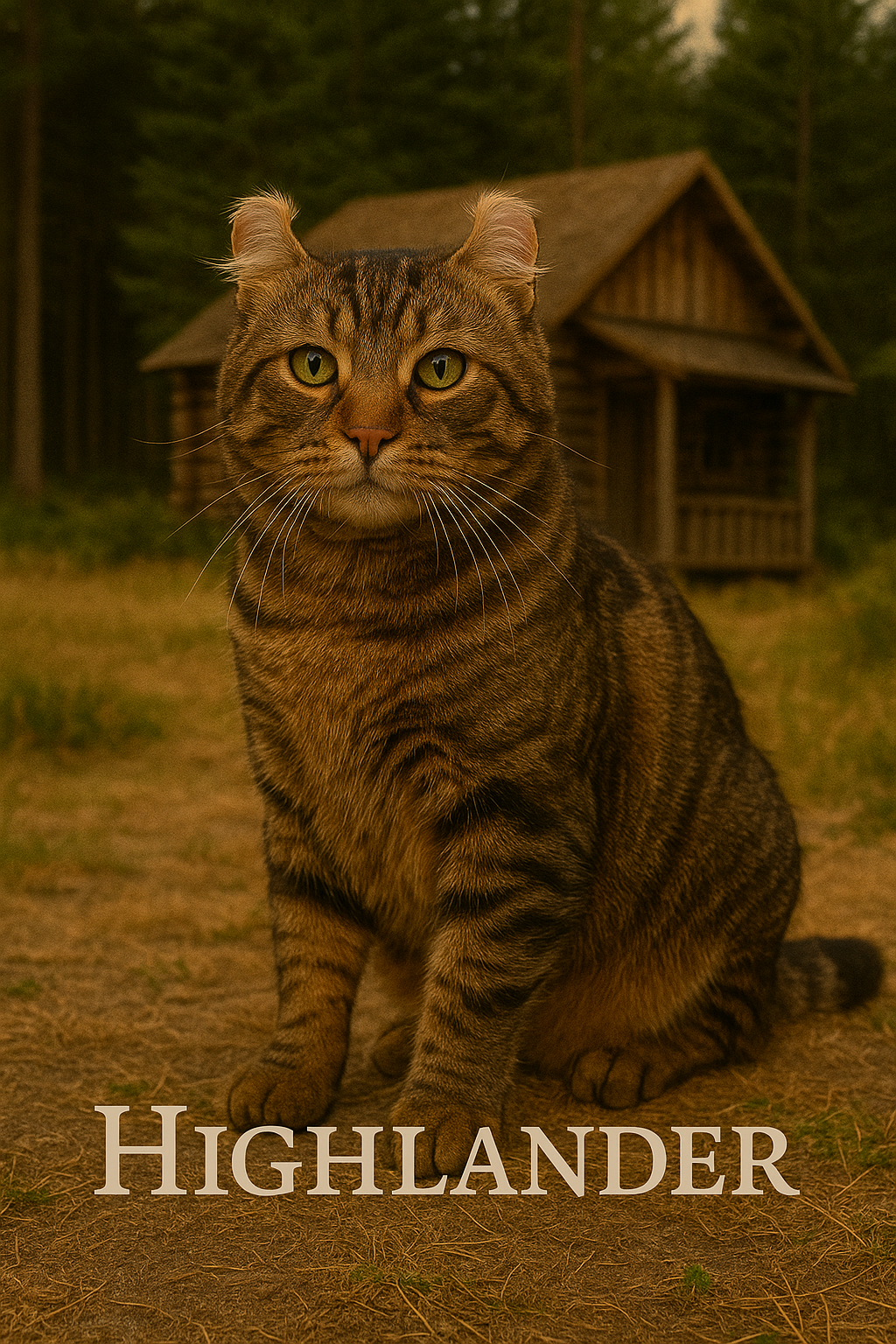🐾 Highlander: The Wild-Looking Cat with a Playful, Loving Heart 🐾
With its lynx-like appearance, curled ears, and bobbed tail, the Highlander cat is a breed that makes a bold visual statement—but don’t be fooled by its wild looks. This rare and relatively new breed is a friendly, playful, and affectionate companion that thrives in active, loving homes.
🌄 Origins and History
The Highlander is a newer experimental breed, developed in the early 2000s in the United States by crossing Jungle Curls with Desert Lynx cats. The goal was to create a domestic cat with a wild, exotic appearance but a tame, social temperament.
Originally called the “Highlander Lynx,” the breed’s name was shortened to “Highlander” when it began receiving recognition by major registries. The International Cat Association (TICA) has listed the Highlander as an Advanced New Breed, meaning it’s well on its way to full recognition.
🐈 Appearance
The Highlander’s unique appearance is its most eye-catching trait—it’s a cat that looks like it just stepped out of the wilderness.
Key features:
- Medium to large size, muscular and athletic
- Distinctive curled ears, inherited from its Jungle Curl ancestry
- Short or bobbed tail, sometimes kinked or curved
- Wildcat-like features: broad head, prominent whisker pads, and strong jaw
- Coat can be short or long, often with spotted, marbled, or classic tabby patterns
- Accepted coat colors include brown, silver, black, mink, and more
Despite its fierce appearance, the Highlander has a soft, plush coat and a gentle, curious expression.
😻 Personality and Temperament
The Highlander is all about fun, friendship, and affection. It combines athleticism with a warm, interactive personality.
Why owners love them:
- Highly playful and energetic, often described as dog-like
- Affectionate and people-oriented, loves to be part of family life
- Great with kids, other cats, and even cat-friendly dogs
- Intelligent and curious, enjoys games, puzzle toys, and exploring
- Generally quiet-voiced, though some are softly chatty
They enjoy climbing, chasing toys, and lounging in sunny spots—but they’re just as happy cuddling with their humans.
🧼 Care and Grooming
Highlanders are relatively easy to care for, though grooming needs can vary depending on coat length.
Care tips:
- Brush weekly for short-haired Highlanders; brush 2–3 times per week for long-haired ones
- Regular ear checks are important due to the curled ear shape
- Keep nails trimmed and teeth clean with regular home care
- Provide climbing trees, scratching posts, and interactive playtime
- Keep them indoors for safety and to protect their unique features
Highlanders are generally healthy, but as with all breeds, responsible breeding and regular vet checkups are important.

Did You Know:
Despite their wild appearance, Highlanders have no wildcat DNA—they're 100% domestic and 100% lovable.
🏡 Ideal Home
The Highlander is perfect for households that want an active, loving, and visually stunning cat.
Perfect for:
- Families with children or multiple pets
- Homes that enjoy interactive pets with a touch of the exotic
- Owners looking for a social, playful companion
- Cat lovers who want something rare and attention-grabbing
They’re ideal for indoor-only living, and they do best when they receive daily interaction and play.
The Highlander cat is a truly one-of-a-kind breed that combines wild aesthetics with a playful, gentle heart. With their curled ears, bobbed tail, and affectionate nature, Highlanders are perfect for anyone looking to share their home with a cat that’s as fun as it is unique.
